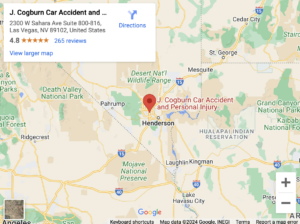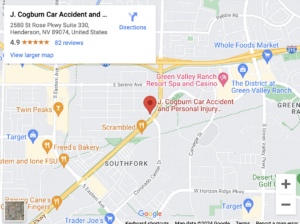
When you file a personal injury claim, you usually have to prove that someone else’s negligence caused your injuries. Negligence has several parts—often called legal “elements”—and one of the most important is causation. Put simply, you must show that the other party’s actions led directly to your harm. If you cannot connect their behavior to your injury, you will not be able to recover compensation.
Read on to learn more about causation and the impact the concept may have on your personal injury case.
The Elements of Negligence
Before we dive into causation, it helps to understand the elements of negligence as a whole. Courts and insurance companies usually look for these four elements:
- Duty of Care: The other party had a legal duty to act reasonably and avoid causing harm.
- Breach of Duty: They failed to meet that duty by acting (or failing to act) in a safe manner.
- Causation: Their breach of duty led directly to your injuries.
- Damages: You suffered measurable harm, whether physical, financial, or emotional.
Every personal injury case is unique, and each of these elements must be shown if you want to recover money for your losses. If any one of them is missing, the claim may fail.
Why Causation Matters
Causation sits at the core of a successful lawsuit because you have to prove your injuries wouldn’t have happened without the defendant’s actions. It’s not enough to show the other person acted carelessly; you must link that careless act to your specific harm.
For instance, if a driver ran a red light but you got injured hours later by slipping on a wet floor, that driver’s wrongdoing has nothing to do with your slip and fall. Therefore, you couldn’t hold them responsible for that injury.
Because of this requirement, defendants (and insurance companies) often try to show there was some other reason you got hurt. If they can break the chain of cause and effect, you could lose the right to collect damages. That is why collecting solid proof—from eyewitness accounts to medical records—is so important.
Factual Cause vs. Proximate Cause
Under the scope of causation, there are two key ideas: factual cause and proximate cause.
Factual Cause (But-For Test)
Factual cause is sometimes referred to as the “but-for test.” This term means that but for the defendant’s action (or lack of action), you would not have suffered an injury. Imagine you were rear-ended by a driver who was texting. But for their decision to text while driving, the crash would not have happened, so there is factual causation.
However, factual cause alone does not always mean the defendant is legally responsible. That’s where proximate cause enters the picture.
Proximate Cause (Legal Cause)
Proximate cause focuses on whether it was reasonably foreseeable that the negligent act would hurt someone like you. Courts do not usually hold people responsible for bizarre, unpredictable events that follow from their mistakes. Instead, they look at whether your injury was a natural or likely outcome of the defendant’s carelessness.
For example, if someone drives through a red light and hits another vehicle, it’s foreseeable that someone could be hurt. But if their action set off a chain reaction so unusual that the injury to you was nearly impossible to predict, the defendant might argue they should not be held accountable. Proximate cause tries to limit how far liability extends after someone acts negligently.
What If I’m Being Blamed for My Accident in Nevada?
Nevada, like many other states, follows a modified comparative negligence rule. This means you can still receive compensation even if you share part of the blame for the accident, as long as your share of fault is not 51% or more.
Proving causation becomes even more important in these scenarios. Insurance companies may try to push as much fault onto you as possible to reduce the payout. By building strong evidence of how the other party’s actions caused your injuries, you can protect your right to fair compensation under Nevada law.
Contact a Nevada Personal Injury Lawyer for a Free Case Review
Causation is vital to almost any personal injury claim, and proving it may not always be simple. You have to show that another person’s negligence set in motion the events that led to your harm, and that these events were reasonably foreseeable. If the other side tries to blame you—or if the chain of cause and effect gets complicated—you may need professional help.
That is where a Nevada personal injury lawyer can make a difference. An attorney can gather important evidence, protect your rights, and navigate tricky insurance rules on your behalf. Most offer a free case review, so you can discuss your situation and decide if legal help is the right move for you. If you are ready to take the next step in seeking fair compensation, don’t hesitate to reach out to Cogburn Davidson Car Accident & Personal Injury Lawyers for a free consultation at 702-996-4786.


